|
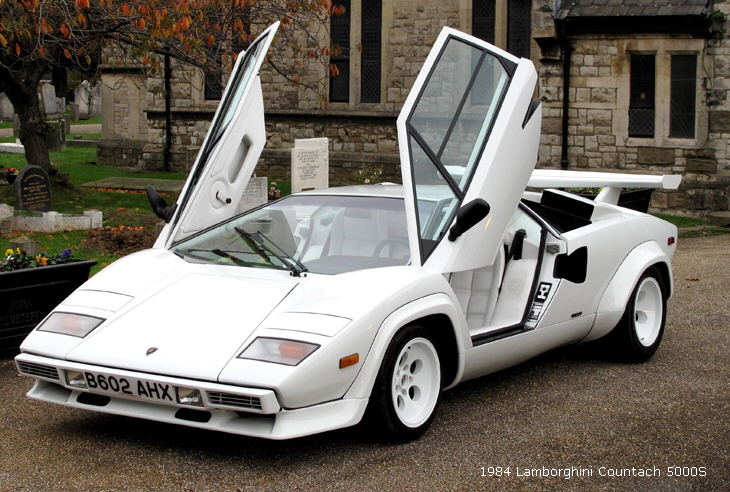
1981 to 1987 Lamborghini Motorcar History
Fortunately, the allure of these cars, flaunting a name that had now become a legend, coupled above all with
the absolutely unrivalled aura of the Countach, aroused enormous interest in the company. As soon as it was put up for liquidation, it had a number of admirers lined up to take it over. The judge entrusted the company
to two brothers, Jean-Claude and Patrick Mimran, the wealthy owners of a sugar empire in Senegal and, naturally, sports car lovers. The two brothers, assisted by their plenipotentiary in Sant'Agata, Emil Novaro,
immediately set out to reconstruct the company. The 'Nuova Automobili Ferruccio Lamborghini SpA' company was thus formed in January 1981 and from that moment on, work was seriously underway again. One of the
first decisions - an exquisitely technical one - was to hire engineer Giulio Alfieri as the company's technical director.
With this celebrated designer at the helm of the company and loyal staff members Lamborghini went to the Geneva Motor Show in March 1981. It exhibited a Miura, restyled by a Swiss company with debatable results,
and the Countach S with its large rear wing. Also on display was the initial attempt to reinterpret the hefty off-road Cheetah, which had been modified extensively to avoid legal action threatened by FMC and was
thus dubbed the LM. However, the most tangible and reassuring sign of the new path undertaken by Lamborghini came with the first appearance of the Jalpa. The injection of capital by the Mimran family finally
made it possible to resume serious development work on the Countach, which had essentially remained the same since 1973, with the exception of wider mudguards and tyres for the S version. Alfieri increased the
displacement of the classic 12-cylinder engine, bringing it to 4.7 litres to crank out 375 hp and thus recuperate the outstanding performance that had been sacrificed to some extent by the tyres and
aerodynamic additions. This was the Countach 5000, whose look was virtually indistinguishable from the 4-litre S version.
The Mimran brothers also decided to insist in the direction - certainly innovative for the period - of large high-performance off-road vehicles. Also in 1982, the engine was judiciously moved in front of the cockpit,
culminating in the prototype known as the LMA, an acronym that, according to different interpretations, may mean 'Lamborghini Motore Anteriore' or 'Lamborghini Militare Anteriore'.
Although it was costly, work continued to develop the off-road model, which became the LM 004. By this time, it had a colossal 7-litre front-mounted V12 engine and, for the first time, its top speed broke the barrier
of 200 km/hour. Pirelli collaborated with Lamborghini to develop a new top-performing tyre that could be used on any terrain, from asphalt to the sands of the great African deserts. This would become the Pirelli Scorpion.
At the same time, work also proceeded on an in-depth technical update of the cars. In 1985, the Lamborghini stand at the Geneva Motor Show presented the new version of the Countach, the
Quattrovalvole. Alfieri extensively redesigned the entire classic Lamborghini engine, which had first been put out nearly 22 years earlier. He further increased its displacement to add power, and by using heads with four
valves per cylinder, the 5167-cc engine climbed to 455 hp at 7000 rpm, a power level that put the Countach well ahead of all its traditional rivals. After years of problems, evolutions, redesigns and modifications,
Lamborghini's hefty off-road vehicle finally went into production: the year was 1986. The LM 002 mounted a V12 engine that was essentially the same one used for the Countach, giving up the idea of mounting the
enormous 7-litre of the previous prototype.
Through the shrewd reconstruction work spearheaded by the Mimran brothers and Emil Novaro, the revival of
Lamborghini was firmly established by this time. The year 1987 was a positive one, with good sales of both the Countach and the Jalpa. In the meantime, orders started to roll in for the LM and development work
continued on the whole line-up. The early prototypes of the Tipo 132, destined to become the successor to the Countach, began to circulate. In 1987, work was also undertaken to develop a car derived from the
Jalpa, but with a canvas top: this was the Jalpa Spyder, also known as the Speedster. A prototype was built but the car never went into production, due to technical difficulties.
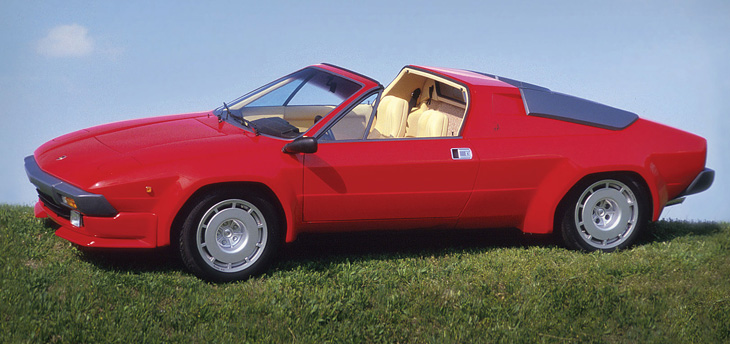
1981 Jalpa, The last V8 model - Lamborghini based the Jalpa in large parts on the Silhouette but gave it a
completely new body, once again designed by Bertone. The engine's displacement was expanded from 3 to 3.5 liters, with the power remaining at 250 HP the increase did not aim for more power but for better
handling and superior driving comfort.
The Jalpa was the last Lamborghini V8 model since production stopped in 1988 there were no other 8-cylinders from Lamborghini.
Lamborghini V12
It was exactly this engine that captured the imagination of show-goers at the 1966 Geneva Auto Salon in
the Lamborghini Miura. Although its main features were already familiar from the 400 GT, this time the four-liter 60 twelvecylinder was mounted transversely behind the cockpit, with transmission and differential in
a single unit fixed directly to the frame.
The 320 hp made the series production Miura that followed the fastest production car of its time with a
stated top speed of more than 280 km/h and, with that, the first true super sports car. This engine was further developed over the years, with several iterations featuring in the Miura S (370 hp at 7,000 rpm, 285
km/h) and Miura SV (385 hp, 300 km/h). In the Miura Jota, a one-off made for racing, the V12 generated 440 hp at 8,500 rpm. However, applications for the four-liter were not limited to the mid-engine Miura. In the
front-engine Islero, introduced in 1968, and in the 400 GT Jarama, it produced 350 hp, while in the futuristic Espada the figure was 325 hp (later also 350 hp). In 1974, the Espada also saw an automatic transmission
offered for the first time.
The generational shift from the Miura to the new LP400 Countach took place in the early seventies. 1971
brought the prototype with a breathtaking, edgy form, the genes of which would ultimately re-emerge forty years later in present-day Lamborghini super sports cars. Marcello Gandini's design was a fitting outfit for a
five-liter version of the V12.
However, this engine was dropped from the series production model in 1973 in favor of a further evolution of
the four-liter unit. In the 1973 Countach still without the "wing" or spoiler of the eighties it was longitudinally mounted behind the driver, where it generated 375 hp at an impressive 8,000 rpm and reached
a top speed of 300 km/h. The years that followed saw the Countach engine undergo a series of evolutionary developments, although still based on the familiar cornerstones of the first V12 unit. It was in 1985 that the
Countach Quattrovalvole took displacement over the five-liter mark for the first time (5,167 cm3) and as the name implies featured a four-valve cylinder head. Output was an impressive 455 hp at 7,000 rpm.
In 1986, the five-liter V12 was presented with a completely new application the Lamborghini LM002 Truck,
may also have had the 450 hp engine mounted up front, but the 2.7 ton automobile was the first and only SUV produced by the brand, a four-door all-terrain vehicle. The late eighties saw the amazingly
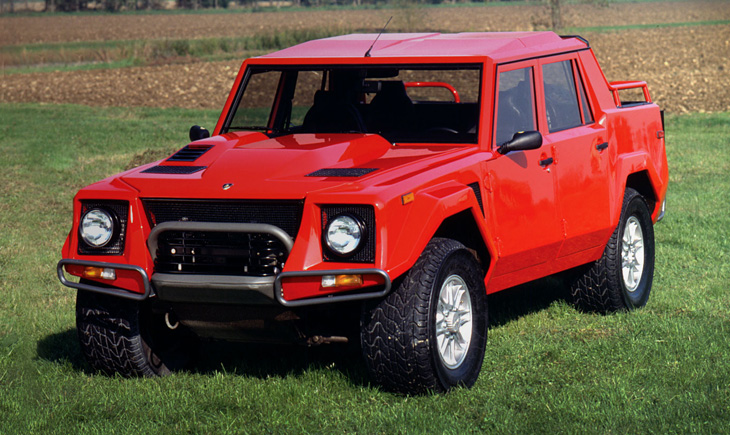
1986 The presentation of the LM 002 model at the Brussels Auto Show in 1986 was like an earthquake.
This car was raw, big and powerful yet it could be ordered with the finest leather trim or air conditioning. It is no surprise that kings and actors were among the buyers.
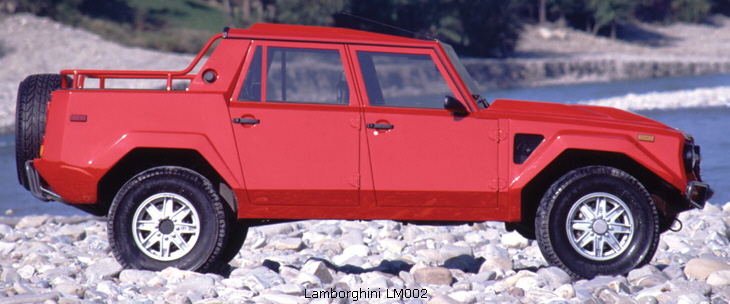
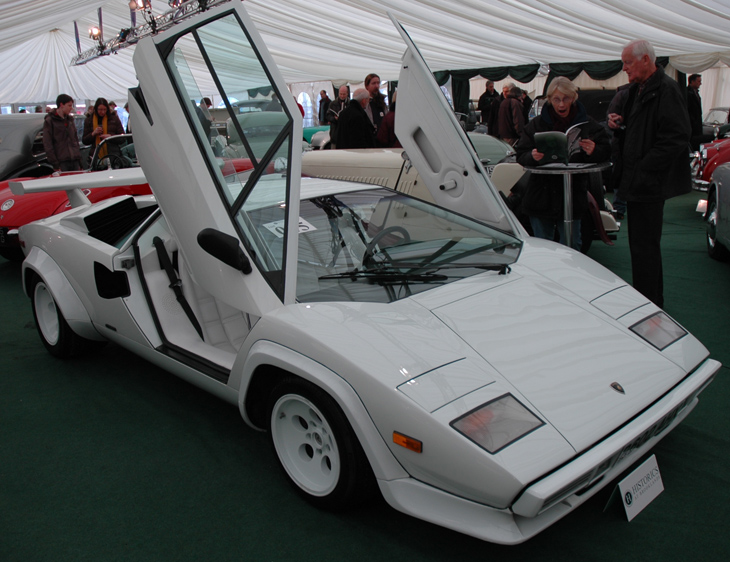
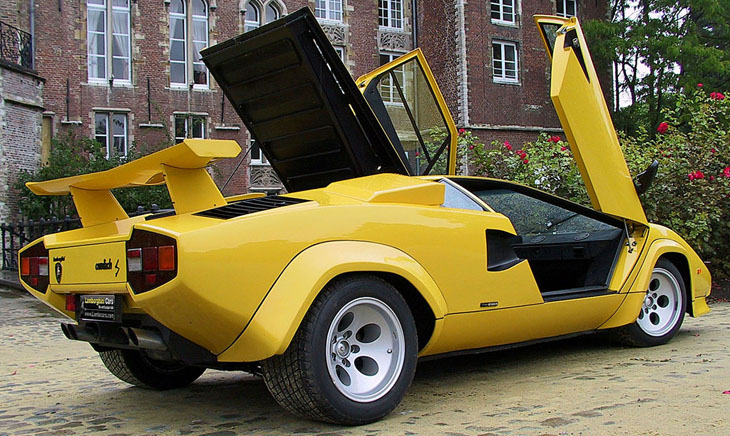
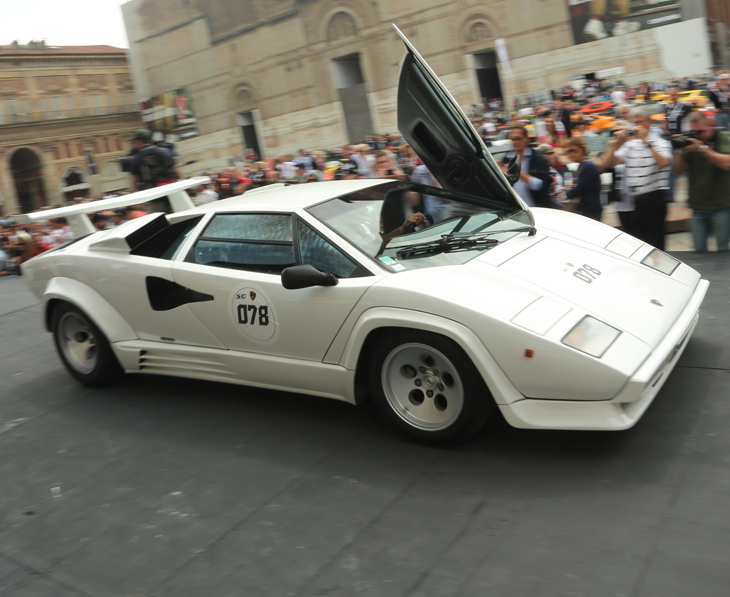
|





